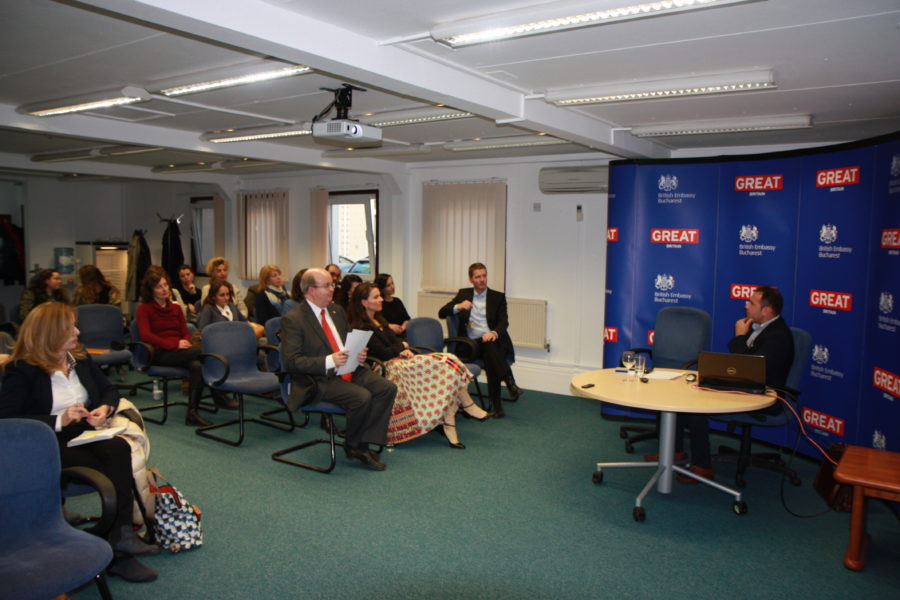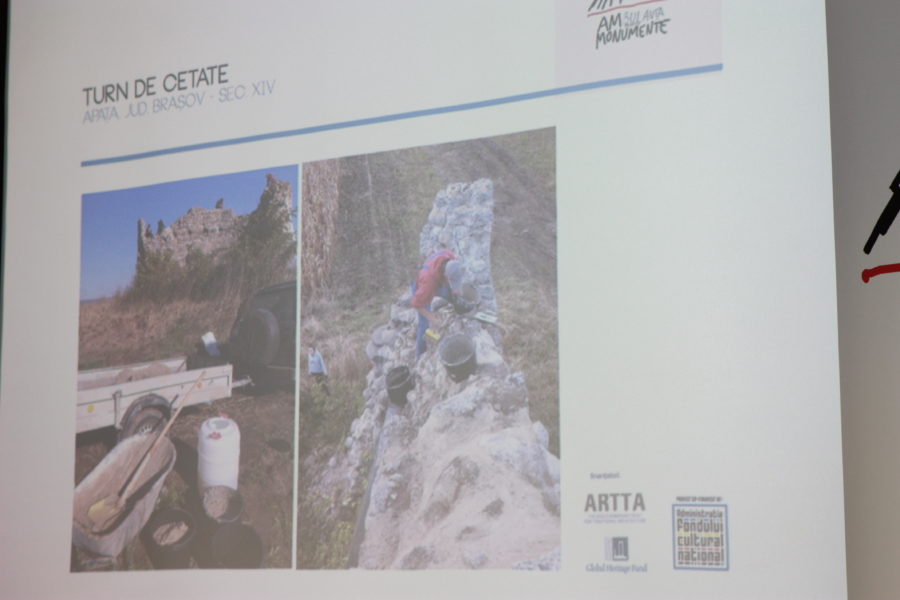21st November 2016
Preserving the Historic Buildings of Romania

I was really pleased to host last week with the Romanian Ministry of Culture and the NGO Monumentum an event which highlighted two new initiatives to help in the raising awareness about, and preservation of, Romania’s cultural patrimony.
The first was the “Ambulance for Monuments” project being piloted by Monumentum in Southern Transylvania; a means of providing emergency support for highly endangered buildings.

The second, presented by Klaus Birthler, an adviser to the Ministry of Culture, was the “Heritage Radar” project, an open data initiative which will allow everyone, including government institutions and civil society organisations, to contribute to an ongoing monitoring of the condition of historic structures in Romania.
Both of these initiatives are fascinating, and I wish them every success.
The importance of this work can be amply seen just by walking 500m in any direction from the British Embassy. The built environment of Bucharest is amazing, offering:
- “Little Paris”-style architecture of the late 19th and early 20th centuries, with its clamshell awnings and elegant wrought-iron balconies
- Buildings of the Neo-Romanian style promoted by architects like Ion Mincu, with features like the cula towers drawn from Oltenian architectural traditions and balconies harking back to Brancovean styles.
- Astonishing inter-war experimentation, from art-deco buildings in an ocean liner style, to apartment blocks designed Marcel Ianco, one of the leaders of the Dada movement.
But it is also under threat. The World Monuments Fund has placed Bucharest city as one of the 50 sites worldwide on its 2016 World Monuments Watch, in recognition of the imminent threats and challenges it faces. This is what the World Monuments Fund has to say.
“The Romanian capital is facing a crisis. A built environment of great historical, social, and symbolic significance is threatened by abandonment and demolition of historic buildings, uncontrolled development, and inappropriate rehabilitation.”

There are many challenges:
- Some are legal: buildings stand neglected and quietly decaying while ownership disputes are sorted out.
- Some are economic: rising land prices offer incentives to demolish old buildings and put up new blocks.
- Some are around inadequacies in the administrative and legal protections offered to historic buildings, and unfortunately also including corruption in circumventing the protections which are in place.
- Some are around practical issues, like a shortage of skilled craftsmen able to restore historic buildings in an appropriate manner.
The challenges facing the architectural patrimony of Romania are not confined to large urban areas like Bucharest. Romania’s villages are also under threat. The Mihai Eminescu Trust was established in the 1980s, drawing attention to the danger to villages posed by Ceausescu’s policy of “systematisation” in favour of concrete apartment blocks.
Ceausescu, and systematisation, are gone, but villages face continued threats. In southern Transylvania, the departure to Germany of ethnic Saxon communities resulted in many cases in the occupation of buildings by newcomers from different cultures and without the funds to keep them in good order. The lure of PVC windows and “modern” roofs has defaced traditional villages, and as in the urban areas few craftsmen are versed in traditional building techniques.
Fortunately there are many good people and organisations working in practical ways to raise awareness of the risks to Romania’s wonderful architectural patrimony and to addr ess the challenges. The co-organisers of last week’s event, Monumentum, are one such organisation: for example, through their construction of a kiln in Sibiu County producing traditional roof tiles. This was inaugurated last year by His Royal Highness The Prince of Wales, who has been a tireless supporter of the preservation of the historic architecture of Transylvania and of the traditional building techniques which are needed to sustain it.
Indeed I am delighted that many of these great initiatives and activities in Romania involve close partnership with the United Kingdom. The Mihai Eminescu Trust, a UK registered charity, has its roots in the visits to Romania by Jessica Douglas-Home in the communist period, supporting dissident academics by smuggling in western journals. And Monumentum is partnered by a British organisation, the Anglo-Romanian Trust for Traditional Architecture (ARTTA), founded by Romaniaphile William Blacker, in a range of practical projects.
But success will depend above all on the Romanian people. The best guarantee of the survival of the historic buildings of Bucharest and the villages of southern Transylvania lies in local people valuing them, and fighting for them. The future is in Romania’s hands, but the clock is ticking.
The ambulance is a great idea as is the ‘radar’ – maybe dopt a monument might be another step? Keep up the good work.
Good article about an important issue. I do hope they can save some of Romania’s wonderful built heritage